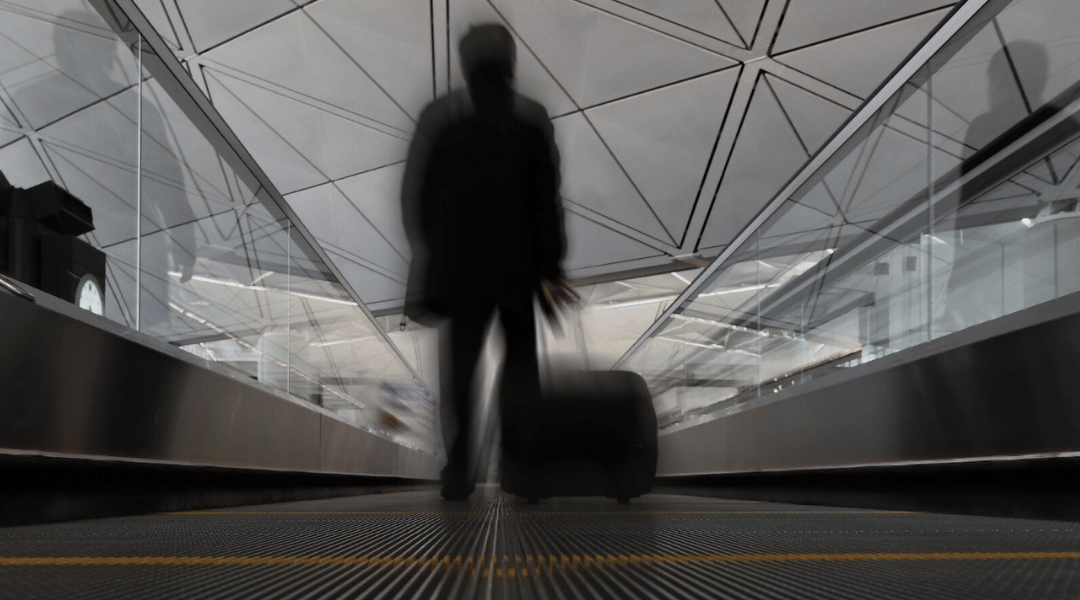In Conversation With: Steve Murphy
Parking Revolution: Navigating the Next Parking Landscape
How has parking changed in the last few years?
My perspective on the parking market has evolved as much as the market has. The evolution of the parking industry since COVID has been transformative, reshaping not only the methods of payment but also the fabric of how we perceive and manage parking spaces.
From the tangible transition of upgrading to polymer notes to the intangible yet impactful shift towards more digital and contactless payment solutions, the parking market has undergone a profound change. My journey in this dynamic field has been a tapestry woven with threads of awareness and revelation.
In the not-so-distant past, we navigated the uncharted waters of the new polymer note upgrade, only to be met with the unexpected challenge of Wannacry a mere week after I started. The industry found itself in a reactive stance, adapting to the ever-evolving landscape of technology and customer expectations.
The change isn’t solely confined to the change in payment methods; it’s a holistic transformation. The hardware, once the backbone of parking systems, has gracefully made way for speed and efficiency. Payment on exit, mobile payments, and for us, the almost-arrival of payment on apps signify not just progress but a shift in user interaction with parking software.
However, it’s crucial to acknowledge that not all changes have been positive. With the push towards digital payments, the resilience of a car park now hinges on connectivity. The rare occurrence of losing connectivity translates to a potential loss of all credit card payments, emphasising the need for robust contingency plans and customer understanding of the inherent risks.
Security has become a paramount concern in this digital era. The spectre of Wannacry prompted a fundamental shift from the simple notion of a locked payment machine to a comprehensive approach encompassing end-to-end encryption on payment terminals, robust antivirus systems, over-the-air updates, and a steadfast commitment to digital security.
No longer can we solely rely on hardware; modern parking teams must now be well-versed in the intricacies of software, cloud systems and cybersecurity. The support we provide to our customers now goes beyond traditional uptime concerns to embrace concepts like mean time to fail and predictive fault repairs.
In essence, the post-COVID parking landscape is complex and challenging. As we embrace the digital future, it’s imperative to tread carefully, ensuring that progress aligns seamlessly with security, resilience, and customer trust. The journey is ongoing, and every twist and turn reveals new facets of the evolving parking industry.
How did our customers want to move forward?
Initially, there was some real unease around pay machines – the whole touching thing had people on edge for a while. Fast forward, and it’s like that concern never even happened. The past two years feel like a blur.
Now, when it comes to what our customers want, it’s not so much about us changing but more about how the world around us has done a 180. Take the high street, for example – COVID had a huge impact on it. Being seen as the premium brand in the market turned into a bit of a double-edged sword, both a blessing and a curse. Customers understand the value of the products and the services we provide, but now they’re also asking, “Do we really need all these bells and whistles, or is good enough, well, good enough?”
This shift has customers, who were once all about locking in that revenue, considering solutions that might not be airtight. What does that mean for drivers and our team? Sites that used to have barriers and tickets are now going barrierless and ticketless. It’s a whole new ball game, and we need to ensure we are right there with them at the very least, but preferably well ahead of their thinking, providing the solutions they need.
Where are we now? As a business and as an industry?
Right now, the industry is in a bit of a flex mode, grappling with the fact that the government isn’t exactly taking a stand on street parking, or the changes in the high street, and governments are all about carbon reduction without a clear roadmap. And let’s not forget the rising prominence of electric vehicles – a customer base that needs some serious support.
Now, as for our business, we’re not just sitting back and watching the show. We’ve taken solid steps to lock in our long-term game plan. Diversifying our customer base was a no-brainer – adding other vertical markets to our existing shopping and airport customers. City centres with mixed-use setups were already a stronghold, and we’ve ramped up our focus. Hospitals are now in the mix, and our success story? Well. We’ve truly excelled in the stadium sector, dominating the game for the past three years.
So. We’re navigating the twists and turns, making strategic moves, and gearing up for whatever the industry throws our way.
How do you see technological advances changing parking?
From my perspective, the parking realm seems to be in a holding pattern, waiting on government decisions that, frankly, they’ve been slow to make. It’s the classic government dance with innovation – they toss the responsibility ball to the industry and see where it lands. If they don’t take the lead in communicating with us, you can bet the drivers will be the ones spinning the narrative.
So, what’s the forecast? It’s all about what’s happening in various sectors. Take Towns and Cities, for instance. I can’t claim to have been around a century ago, but comparing today’s high streets to the ones in those old photos, there’s been a noticeable shift. Back in the pre-war days and even up until the ’60s, high streets were all about functionality. Then came the ’80s to the 2000s, and it was a fashion frenzy. Now, we’re in the era of coffee shops, eateries, and diverse activities. My gut feeling is that parking will ride the wave of broader societal changes, and the technology in our sector will evolve accordingly. We have seen parking moving away from town centres already. I feel we will eventually turn these sites into mobility hubs. I can see this not only being a part of the future, but a demand from our customer’s customers.
We can see the same happening in airports – my bet is on parking moving offsite, except for drop-offs, which will likely become even more of a premium service. I think this is all linked to CSR and the increasing concern about carbon emissions from planes, trains, and automobiles. The straightforward solution is to shift parking away from the terminal. It just seems like the logical step. This will mean greater collaboration with other services – buses, trams, trains etc. Again, mobility hubs will be the key.
Our technology is already poised to take centre stage in supporting towns, airports and all our customers through these transformations. We’re not waiting for all of this to happen, though. We are at the front of the pack pushing the boundaries of innovation without waiting for someone else to take the lead.




